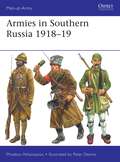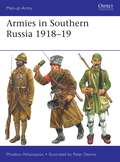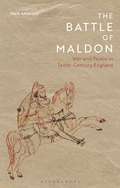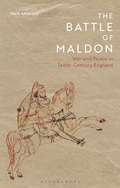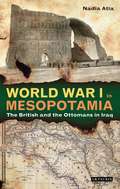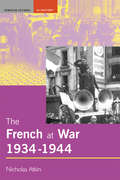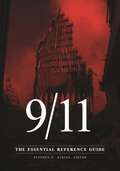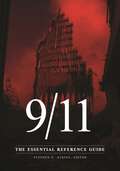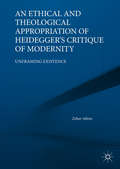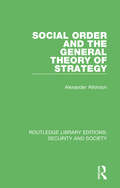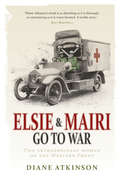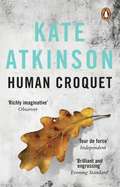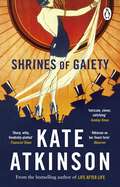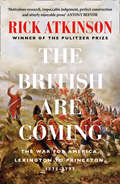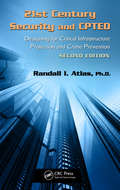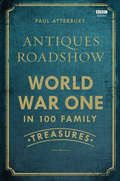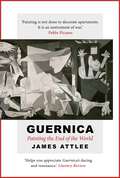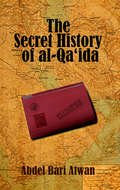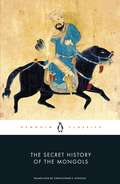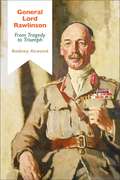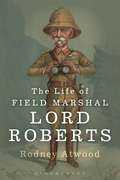- Table View
- List View
Armies in Southern Russia 1918–19 (Men-at-Arms)
by Phoebus AthanassiouAn important aspect of the Russian Civil War were the several Allied expeditions immediately following World War I in support of the disunited Russian 'White' armies resisting the Bolshevik Revolution. Although they ended in failure, these ventures were long resented, and were the origin of the 70-year-long Soviet suspicion of the Western Allies. British and US expeditionary forces operated in North Russia and Siberia in support of General Yudenich and Admiral Kolchak respectively, and a French and Greek expeditionary force (plus Romanian and Polish elements) operated in Crimea and south-western Ukraine, in support of General Denikin. The situation was further complicated by the presence of strong Imperial German elements still under arms, and by war between various factions in the Ukraine. This Southern theatre of the Allied interventions is far less well known than that of the British and Americans in the North and East.Featuring rare photos and new colour plates, this fascinating new book describes this major Allied intervention in the Russian Civil War. Dr Phoebus Athanassiou writes a compelling account of how the French and Greeks alongside White Russians were greatly outnumbered by pro-Bolshevik forces and were relentlessly pushed back by the Ukrainian forces. In just over 4 months, on 28 April 1919, the last of their forces were evacuated by Allied navies from Sevastopol in Crimea.
Armies in Southern Russia 1918–19 (Men-at-Arms #540)
by Phoebus AthanassiouAn important aspect of the Russian Civil War were the several Allied expeditions immediately following World War I in support of the disunited Russian 'White' armies resisting the Bolshevik Revolution. Although they ended in failure, these ventures were long resented, and were the origin of the 70-year-long Soviet suspicion of the Western Allies. British and US expeditionary forces operated in North Russia and Siberia in support of General Yudenich and Admiral Kolchak respectively, and a French and Greek expeditionary force (plus Romanian and Polish elements) operated in Crimea and south-western Ukraine, in support of General Denikin. The situation was further complicated by the presence of strong Imperial German elements still under arms, and by war between various factions in the Ukraine. This Southern theatre of the Allied interventions is far less well known than that of the British and Americans in the North and East.Featuring rare photos and new colour plates, this fascinating new book describes this major Allied intervention in the Russian Civil War. Dr Phoebus Athanassiou writes a compelling account of how the French and Greeks alongside White Russians were greatly outnumbered by pro-Bolshevik forces and were relentlessly pushed back by the Ukrainian forces. In just over 4 months, on 28 April 1919, the last of their forces were evacuated by Allied navies from Sevastopol in Crimea.
The Battle of Maldon: War and Peace in Tenth-Century England
by Mark AthertonDepicting one of the defining conflicts of tenth-century England, The Battle of Maldon immortalises the bloody fight that took place along the banks of the tidal river Blackwater in 991, poignantly expressing the lore and language of a determined nation faced with the advance of a ruthless and relentless enemy. But, as Mark Atherton reveals, The Battle of Maldon is more than a heroic tale designed to inspire courage and unity in a time of crisis: rather, it celebrates ideals of loyalty and friendship and commemorates an event which changed the face of English culture. Using Atherton's own vivid and illuminating translations from Old English, The Battle of Maldon: War and Peace in Tenth-Century England evokes the chaotic ebb and flow of the battle while also placing 'Maldon' in the context of its age. Seeking to reconstruct the way of life, the spirituality and the worldview of the original audience, Atherton examines how and why the poem encouraged its readers to relive the visceral experience of battle for themselves. With this exciting study, Atherton provides an authoritative treatment of this iconic text, its history and its legacy. As such, this important book will be a vital resource for all readers of Old English literature and early medieval history.
The Battle of Maldon: War and Peace in Tenth-Century England
by Mark AthertonDepicting one of the defining conflicts of tenth-century England, The Battle of Maldon immortalises the bloody fight that took place along the banks of the tidal river Blackwater in 991, poignantly expressing the lore and language of a determined nation faced with the advance of a ruthless and relentless enemy. But, as Mark Atherton reveals, The Battle of Maldon is more than a heroic tale designed to inspire courage and unity in a time of crisis: rather, it celebrates ideals of loyalty and friendship and commemorates an event which changed the face of English culture. Using Atherton's own vivid and illuminating translations from Old English, The Battle of Maldon: War and Peace in Tenth-Century England evokes the chaotic ebb and flow of the battle while also placing 'Maldon' in the context of its age. Seeking to reconstruct the way of life, the spirituality and the worldview of the original audience, Atherton examines how and why the poem encouraged its readers to relive the visceral experience of battle for themselves. With this exciting study, Atherton provides an authoritative treatment of this iconic text, its history and its legacy. As such, this important book will be a vital resource for all readers of Old English literature and early medieval history.
World War I in Mesopotamia: The British and the Ottomans in Iraq (Library Of Middle East History Ser.)
by Nadia AtiaThe Punjab region of India sent more than 600,000 combatants to assist the British war effort during World War I. Their families back home, thousands of miles from the major scenes of battle, were desperate for war news, and newspapers provided daily reports to keep the local population up-to-date with developments on the Western Front. This book presents the first English-language translations of hundreds of articles published during World War I in the newsapers of the Punjab region. They offer a lens into the anxieties and aspirations of Punjabis, a population that committed resources, food, labour as well as combatants to the British war effort. Amidst a steadily growing field of studies on World War I that examine the effects of the war on colonial populations, War News in India makes a unique and timely contribution.
The French at War, 1934-1944
by Nicholas AtkinThe years 1934 to 1944 remain the most contentious and dramatic decade in modern French history. Covering the Occupation, the Vichy regime, the Resistance and collaboration, Nick Atkin provides an important introduction to this key period. Accessible and concise, the book offers a wide-ranging synthesis of key themes and events. Looking ahead to the present day, the book also examines how the French establishment and public have coped with the legacy of Vichy, and explains why the occupation is still ever present in French politics and everyday life.
The French at War, 1934-1944
by Nicholas AtkinThe years 1934 to 1944 remain the most contentious and dramatic decade in modern French history. Covering the Occupation, the Vichy regime, the Resistance and collaboration, Nick Atkin provides an important introduction to this key period. Accessible and concise, the book offers a wide-ranging synthesis of key themes and events. Looking ahead to the present day, the book also examines how the French establishment and public have coped with the legacy of Vichy, and explains why the occupation is still ever present in French politics and everyday life.
9/11: The Essential Reference Guide
by Stephen E. AtkinsThis important reference work is essential reading for students attempting to understand the horrific events of September 11, 2001, and the impact the devastating terrorist attack had on the United States.The World Trade Center and Pentagon attacks of September 11, 2001, continue to have a major impact on the United States. The deadliest day in modern U.S. history reverberates in numerous ways, as its influence is felt in such areas as civil liberties, foreign policy, immigration, and presidential powers. This essential guide features illuminating essays written by top scholars that discuss in detail the impact of 9/11 in these critical areas, as well as how it has changed the lives of Muslim Americans in the 21st century.The core of this reference work are the dozens of A–Z entries on all of the key groups, individuals, and events surrounding the 9/11 terrorist attacks, including the first responders, the heroes of United Airlines Flight 93, the Osama bin Laden raid, and the 9/11 Commission Report. In addition, the book offers a carefully curated group of primary source documents essential to understanding the 9/11 attacks. The book concludes with a detailed chronology and an annotated bibliography.
9/11: The Essential Reference Guide
by Stephen E. AtkinsThis important reference work is essential reading for students attempting to understand the horrific events of September 11, 2001, and the impact the devastating terrorist attack had on the United States.The World Trade Center and Pentagon attacks of September 11, 2001, continue to have a major impact on the United States. The deadliest day in modern U.S. history reverberates in numerous ways, as its influence is felt in such areas as civil liberties, foreign policy, immigration, and presidential powers. This essential guide features illuminating essays written by top scholars that discuss in detail the impact of 9/11 in these critical areas, as well as how it has changed the lives of Muslim Americans in the 21st century.The core of this reference work are the dozens of A–Z entries on all of the key groups, individuals, and events surrounding the 9/11 terrorist attacks, including the first responders, the heroes of United Airlines Flight 93, the Osama bin Laden raid, and the 9/11 Commission Report. In addition, the book offers a carefully curated group of primary source documents essential to understanding the 9/11 attacks. The book concludes with a detailed chronology and an annotated bibliography.
An Ethical and Theological Appropriation of Heidegger’s Critique of Modernity: Unframing Existence
by Zohar AtkinsThis book is at once a deeply learned and original reading of Heidegger and a primary text in its own right. It demonstrates the relevance of Heidegger’s thought in responding to the moral and religious challenges of 21st century existence. It shows that Heidegger’s project can be defended against many criticisms once its existential character is taken seriously. What emerges is a powerful exercise in thinking, not about Heidegger, but with and against him. As such, Atkins engages Heidegger as a means of advancing a defense of spirituality in the modern world that holds spirituality itself accountable for its lapses into the mundane. Addressing the most influential figures in recent Continental philosophy, such as Emmanuel Levinas and Theodor W. Adorno, this is a work that will be of timely use to philosophers, theologians, artists, and seekers.
An Ethical and Theological Appropriation of Heidegger’s Critique of Modernity: Unframing Existence
by Zohar AtkinsThis book is at once a deeply learned and original reading of Heidegger and a primary text in its own right. It demonstrates the relevance of Heidegger’s thought in responding to the moral and religious challenges of 21st century existence. It shows that Heidegger’s project can be defended against many criticisms once its existential character is taken seriously. What emerges is a powerful exercise in thinking, not about Heidegger, but with and against him. As such, Atkins engages Heidegger as a means of advancing a defense of spirituality in the modern world that holds spirituality itself accountable for its lapses into the mundane. Addressing the most influential figures in recent Continental philosophy, such as Emmanuel Levinas and Theodor W. Adorno, this is a work that will be of timely use to philosophers, theologians, artists, and seekers.
Social Order and the General Theory of Strategy (Routledge Library Editions: Security and Society)
by Alexander AtkinsonIs there a place left in international politics for the real use of violence as an instrument of policy in the nuclear age? Originally published in 1981, Dr Atkinson attempts to answer this question with new considerations in the presentation of a general theory of strategy. He argues that the classical theory of strategy, so influential for the 19th century and for the better half of the 20th century, was built on a mainly hidden structure of reasoning that still infests theory today. The larger and socially-rooted lessons that insurgent warfare can inform, as best exemplified in the primary sources of the Chinese Civil War period, reveal in a new light this hidden structure of which Clausewitz is the earliest and most eloquent example. By this analysis of the insurgent and classical paradigm opposites the author intends to strip away the blinds of convention still circulating in theory today so that observers and students of international politics may see where new forms of politically motivated violence in the nuclear age seem more than ever to be headed. Here we have perfect paradigm opposites. In the conventional world battle-field action and ideally 'decisive battle' is the center of all other issues in which such conventional logic in the end sweeps up everything else and runs it back through the logic into success or failure of armed power on the battle-field. Everything hangs on this. In the 'revisionist' insurgent world where social order is weaponized as an object and source of military power through its inherent and valuable (armed) power structures social order replaces narrow battle-field action (ideally focused on 'decisive battle') and alternatively redirects the entire logic and all other considerations, including previously heroic conventional military assets, are remodeled to act against (armed) enemy power structures inherent (as always) in social order for the ultimate object of military victory. Again, everything is on this alone. Which paradigm - one the opposite mirror image of the other - will prevail will depend on the stability and power of the nation state and its institutions, the continued and unhappy collapse on which I base the General Theory.
Social Order and the General Theory of Strategy (Routledge Library Editions: Security and Society)
by Alexander AtkinsonIs there a place left in international politics for the real use of violence as an instrument of policy in the nuclear age? Originally published in 1981, Dr Atkinson attempts to answer this question with new considerations in the presentation of a general theory of strategy. He argues that the classical theory of strategy, so influential for the 19th century and for the better half of the 20th century, was built on a mainly hidden structure of reasoning that still infests theory today. The larger and socially-rooted lessons that insurgent warfare can inform, as best exemplified in the primary sources of the Chinese Civil War period, reveal in a new light this hidden structure of which Clausewitz is the earliest and most eloquent example. By this analysis of the insurgent and classical paradigm opposites the author intends to strip away the blinds of convention still circulating in theory today so that observers and students of international politics may see where new forms of politically motivated violence in the nuclear age seem more than ever to be headed. Here we have perfect paradigm opposites. In the conventional world battle-field action and ideally 'decisive battle' is the center of all other issues in which such conventional logic in the end sweeps up everything else and runs it back through the logic into success or failure of armed power on the battle-field. Everything hangs on this. In the 'revisionist' insurgent world where social order is weaponized as an object and source of military power through its inherent and valuable (armed) power structures social order replaces narrow battle-field action (ideally focused on 'decisive battle') and alternatively redirects the entire logic and all other considerations, including previously heroic conventional military assets, are remodeled to act against (armed) enemy power structures inherent (as always) in social order for the ultimate object of military victory. Again, everything is on this alone. Which paradigm - one the opposite mirror image of the other - will prevail will depend on the stability and power of the nation state and its institutions, the continued and unhappy collapse on which I base the General Theory.
Elsie and Mairi Go to War: Two Extraordinary Women on the Western Front
by Dr Diane AtkinsonWhen they met at a motorcycle club in 1912, Elsie Knocker was a thirty year-old motorcycling divorcee dressed in bottle-green Dunhill leathers, and Mairi Chisholm was a brilliant eighteen-year old mechanic, living at home and borrowing tools from her brother. Little did they know, theirs was to become one of the most extraordinary stories of the First World War.In 1914, they roared off to London 'to do their bit', and within a month they were in the thick of things in Belgium driving ambulances to distant military hospitals. Frustrated by the number of men dying of shock in the back of their vehicles, they set up their own first-aid post on the front line in the village of Pervyse, near Ypres, risking their lives working under sniper fire and heavy bombardment for months at a time. As news of their courage and expertise spread, the 'Angels of Pervyse' became celebrities, visited by journalists and photographers as well as royals and VIPs. Glamorous and influential, they were having the time of their lives, and for four years, Elsie and Mairi and stayed in Pervyse until they were nearly killed by arsenic gas in the spring of 1918. But returning home and adjusting to peacetime life was to prove even more challenging than the war itself.
Human Croquet: A Novel
by Kate AtkinsonThe brilliant and profound second novel from the three-times Costa prizewinner and number one bestseller Kate Atkinson.'Vivid, richly imaginative, hilarious and frightening by turns' ObserverOnce it had been the great forest of Lythe. And here, in the beginning, lived the Fairfaxes, grandly, at Fairfax Manor.But over the centuries the forest had been destroyed, replaced by Streets of Trees. The Fairfaxes have dwindled too; now they live in 'Arden' at the end of Hawthorne Close and are hardly a family at all.But Isobel Fairfax, who drops into pockets of time and out again, knows about the past. She is sixteen and waiting for the return of her mother - the thin, dangerous Eliza with her scent of nicotine, Arpège and sex, whose disappearance is part of the mystery that still remains at the heart of the forest.
Shrines of Gaiety: The Sunday Times Bestseller, May 2023
by Kate Atkinson'Atkinson on her finest form. A marvel of plate-spinning narrative knowhow, a peak performance of consummate control.' OBSERVER'This is the perfect novel for uncertain times.' THE TIMES'I can think of few writers other than Dickens who can match it' SUNDAY TIMES'Brilliant' RICHARD OSMAN'Kate Atkinson is simply one of the best writers working today, anywhere in the world' GILLIAN FLYNN____1926, and in a country still recovering from the Great War, London has become the focus for a delirious new nightlife. In the clubs of Soho, peers of the realm rub shoulders with starlets, foreign dignitaries with gangsters, and girls sell dances for a shilling a time.At the heart of this glittering world is notorious Nellie Coker, ruthless but also ambitious to advance her six children, including the enigmatic eldest, Niven whose character has been forged in the crucible of the Somme. But success breeds enemies, and Nellie's empire faces threats from without and within. For beneath the dazzle of Soho's gaiety, there is a dark underbelly, a world in which it is all too easy to become lost.With her unique Dickensian flair, Kate Atkinson brings together a glittering cast of characters in a truly mesmeric novel that captures the uncertainty and mutability of life; of a world in which nothing is quite as it seems._____'Seduction, betrayal, and larger-than-life characters that will have you hooked until the last page' SUNDAY TELEGRAPH'This book is one to savour, for the energy, for the wit, for the tenderness of characterisation that make Atkinson enduringly popular' GUARDIAN'As vividly filthy, populous, dangerous as anything described by Dickens, but writing is closer to Thackeray's...Atkinson is a novelist of unrivalled immediacy, authority, and skill.' FINANCIAL TIMES
The British Are Coming: The War For America, Lexington To Princeton, 1775-1777 (The\revolution Trilogy Ser. #1)
by Rick Atkinson‘To say that Atkinson can tell a story is like saying Sinatra can sing … A powerful new voice has been added to the dialogue about [America’s] origins as a people and a nation. It is difficult to imagine any reader putting this beguiling book down without a smile and a tear.’ New York Times
21st Century Security and CPTED: Designing for Critical Infrastructure Protection and Crime Prevention, Second Edition
by Randall I. AtlasThe concept of Crime Prevention Through Environmental Design (CPTED) has undergone dramatic changes over the last several decades since C. Ray Jeffery coined the term in the early 1970s, and Tim Crowe wrote the first CPTED applications book. The second edition of 21st Century Security and CPTED includes the latest theory, knowledge, and practice of
Antiques Roadshow: World War One In 100 Family Treasures
by Paul AtterburyTo mark the centenary of the start of World War I, the Antiques Roadshow team filmed a series of specials at the Somme, where the public brought in their family's war memorabilia and photographs. These 'antiques' weren't financially valuable, or in some cases even very beautiful, but the stories that came attached to these momentoes were priceless. Antiques Roadshow: World War I in 100 Family Treasures takes 100 of the most fascinating and moving stories and shows how they fit in to the wider history that was occuring around them. From Rifleman Frank Edwards, who led the 'big push' in September 1915 kicking a football in front of the troops (and survived to tell the tale) to the formidable Catherine Murray Roy, one of the first 50 nurses to be sent to the front lines in France. The story behind each object paints an intimate portrait of a long-lost relative, and quotes from the modern-day participants in the roadshow provide a moving link between the families then and now. Fully illustrated, and featuring all the stories from the show, this is a truly unique way of telling the story of those ordinary lives that were, by the onset of war in 1914, thrown into the most extraordinary of circumstances.
Guernica: Painting the End of the World (The Landmark Library #5)
by James AttleeA brilliant, concise account of the painting often described as the most important work of art produced in the twentieth century, as part of the stunning Landmark Library series.Pablo Picasso had already accepted a commission to create a work for the Spanish Republican Pavilion in 1937 when news arrived of the bombing of the undefended Basque town of Gernika.James Attlee offers an illuminating account of the genesis, creation and complex afterlife of Picasso's Guernica. He explores the historical and cultural context from which the painting sprang and the meanings it accrued during its travels across Europe and the Americas, as well as its influence on artists both living and dead. Finally, he argues for its continuing importance as a warning of what happens when the forces of darkness go unchallenged.Praise for Guernica:'Helps you appreciate Guernica's daring and resonance' Literary Review'An impressive overview of the painting's conception and execution, and its subsequent life as an exhibit and a symbol... Attlee's book succeeds in showing how influential Guernica has been' Sunday Times'Attlee digs up rich examples of the debate and devotion that invariably attended the painting... Guernica literature abounds; but this book is a worthwhile addition' Spectator
The Secret History of al Qaeda
by Abdel Bari AtwanOver the last ten years, journalist and al-Qa'ida expert Abdel Bari Atwan has cultivated uniquely well-placed sources and amassed a wealth of information about al-Qa'ida's origins, masterminds and plans for the future. Atwan reveals how al-Qa'ida's radical departure from the classic terrorist/guerrilla blueprint has enabled it to outpace less adaptable efforts to neutralize it. The fanaticism of its fighters, and their willingness to kill and be killed, are matched by the leadership's opportunistic recruitment strategies and sophisticated understanding of psychology, media, and new technology - including the use of the internet for training, support, and communications. Atwan shows that far from committing acts of violence randomly and indiscriminately, al-Qa'ida attacks targets according to a decisive design underwritten by unwavering patience. He also argues that events in Iraq and Saudi Arabia are watershed moments in the group's evolution that are making it more dangerous by the day, as it refines and appropriates the concept of jihad and makes the suicide bomber a permanent feature of a global holy war. While Osama bin Laden and Ayman al-Zawahiri remain al-Qa'ida's figureheads, Atwan identifies a new kind of leader made possible by its horizontal chain of command, epitomized by the brutal Abu Mus'ab al-Zarqawi in Iraq and the bombers of London, Madrid, Amman, Bali, and elsewhere. Scholarly, analytical, objective, it is also intensely readable, being by far the best book on the subject.' -- Tony Benn 'This is a must-read book for anyone interested in understanding our increasingly scary world.' -- Gavin Esler 'What shines out ... is a profound desire to investigate and reveal the truth. Intelligent and informative.' -- Jason Burke, Guardian 'Deeply researched, well reported and full of interesting and surprising analyses. It demands to be read.' -- Peter Bergen, author of Holy War, Inc
The Secret History of the Mongols
by Christopher P. AtwoodA new translation of a great historical epic, recounting the turbulent life and times of Chinggis Khan'Bear the sword andHew asunder high and haughty necksSlash apart all strong and self-willed shoulders'Born poor into a world of dangers and hardships, Chinggis (or Genghis) Khan would grow up to unify Mongolia and conquer a vast empire stretching from modern-day Beijing to Baghdad. The Secret History of the Mongols, written after Chinggis's death in the thirteenth century, is a great historical saga recounting not only his turbulent life and times, but that of his loved ones, ancestors and heirs. This remarkable new translation of the earliest surviving work written in Mongolian gives insight into a world of warlords, kinship, horses, yurts, shamans and vast landscapes, where bloody battles and violent family conflicts are impelled by Heaven's destiny.Translated with an introduction by Christopher P. Atwood
General Lord Rawlinson: From Tragedy to Triumph (Bloomsbury Studies in Military History)
by Rodney AtwoodIn this biography Rodney Atwood details the life of General Lord Rawlinson of Trent (1864-1925), a distinguished British soldier whose career culminated in decisive victories on the Western Front in 1918 and command of the Indian Army in the early 1920s. He served his soldier's apprenticeship in the Victorian colonial wars in Burma, the Sudan and South Africa. His career provides a lens through which to examine the British Army in the late-19th and early-20th century. In the South African War (1899-1902) Rawlinson's ideas aided the defence of Ladysmith, and he distinguished himself leading a mobile column in the guerrilla war. In the First World War he held an important command in most of the British Expeditionary Force's battles on the Western Front. He bears a heavy part-responsibility for the disastrous first day of the Somme, but later in the battle his successful tactics inflicted heavy losses on the enemy. His Western Front career culminated in a series of victories beginning at Amiens. He commanded the Indian Army between 1920 and 1925 at a time of military and political tension following the 3rd Afghan War and the Amritsar Massacre. He introduced necessary reforms, cut expenditure at a time of postwar retrenchment and began commissioning Indians to replace British officers. He would have taken up the post of CIGS (Chief of the Imperial General Staff), thus being the only British soldier to hold these two top posts. He died, however, four days after his sixty-first birthday. Drawing extensively on archival material including Rawlinson's own engagingly-written letters and diaries, this thorough examination of his life will be of great interest to those studying British military history, imperial history and the First World War.
General Lord Rawlinson: From Tragedy to Triumph (Bloomsbury Studies in Military History)
by Rodney AtwoodIn this biography Rodney Atwood details the life of General Lord Rawlinson of Trent (1864-1925), a distinguished British soldier whose career culminated in decisive victories on the Western Front in 1918 and command of the Indian Army in the early 1920s. He served his soldier's apprenticeship in the Victorian colonial wars in Burma, the Sudan and South Africa. His career provides a lens through which to examine the British Army in the late-19th and early-20th century. In the South African War (1899-1902) Rawlinson's ideas aided the defence of Ladysmith, and he distinguished himself leading a mobile column in the guerrilla war. In the First World War he held an important command in most of the British Expeditionary Force's battles on the Western Front. He bears a heavy part-responsibility for the disastrous first day of the Somme, but later in the battle his successful tactics inflicted heavy losses on the enemy. His Western Front career culminated in a series of victories beginning at Amiens. He commanded the Indian Army between 1920 and 1925 at a time of military and political tension following the 3rd Afghan War and the Amritsar Massacre. He introduced necessary reforms, cut expenditure at a time of postwar retrenchment and began commissioning Indians to replace British officers. He would have taken up the post of CIGS (Chief of the Imperial General Staff), thus being the only British soldier to hold these two top posts. He died, however, four days after his sixty-first birthday. Drawing extensively on archival material including Rawlinson's own engagingly-written letters and diaries, this thorough examination of his life will be of great interest to those studying British military history, imperial history and the First World War.
The Life of Field Marshal Lord Roberts
by Rodney AtwoodThis biography of Field Marshal Lord Roberts charts a remarkable life that spanned the apogee of the British Empire. During a diverse career, Roberts won the Victoria Cross, planned the strategic defence of India, turned the tide of war in South Africa, introduced army reform and campaigned for National Service before 1914. Rodney Atwood explores his military career, in particular his role as a tactician and strategist in Afghanistan, Burma, the North-West frontier, South Africa and Europe, but also looks at Roberts as a symbol of Empire and explores his celebration in British culture.
